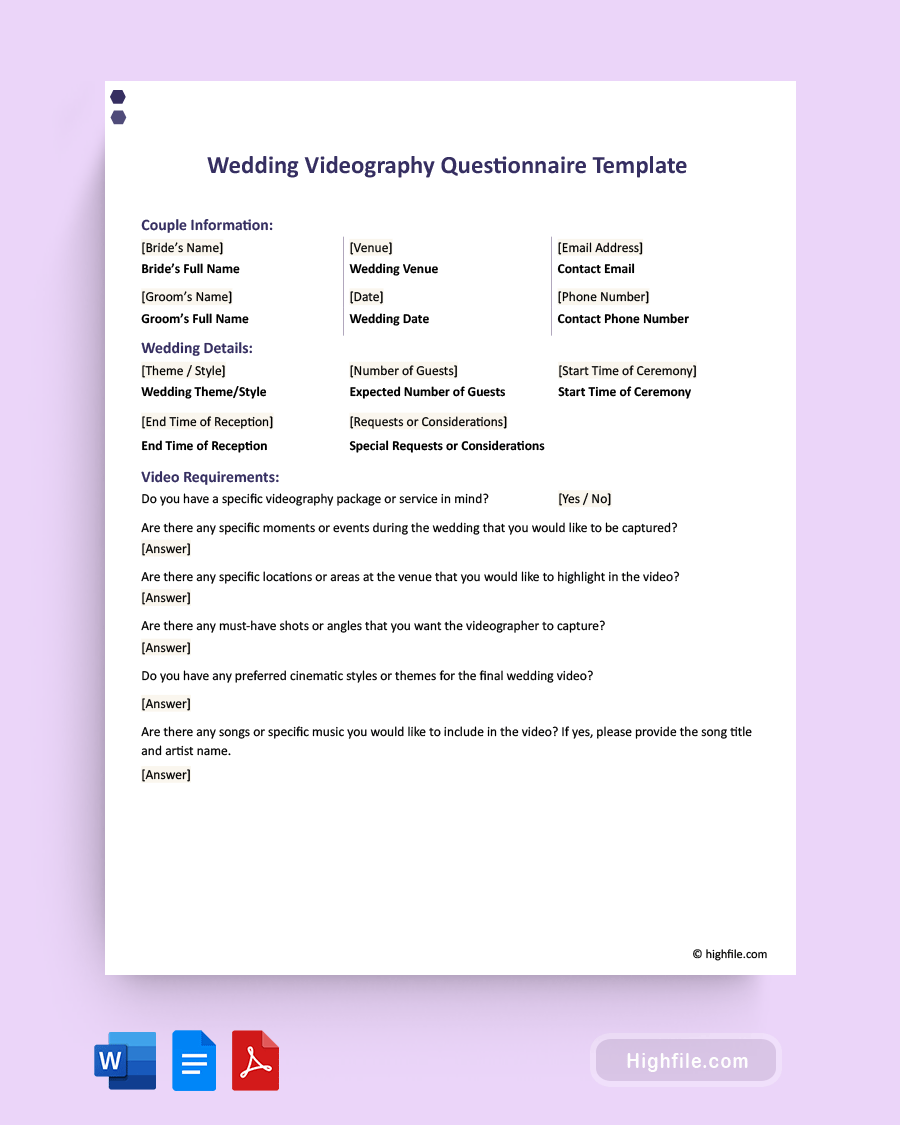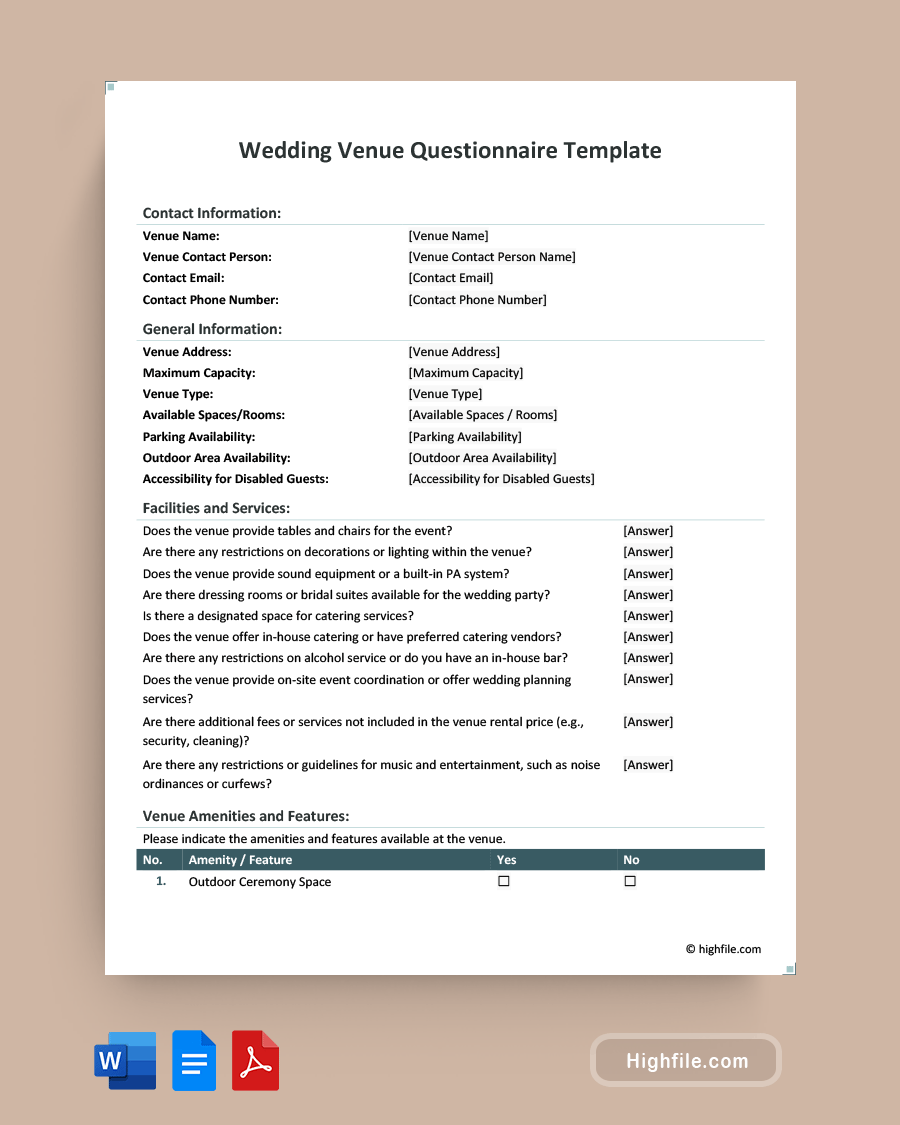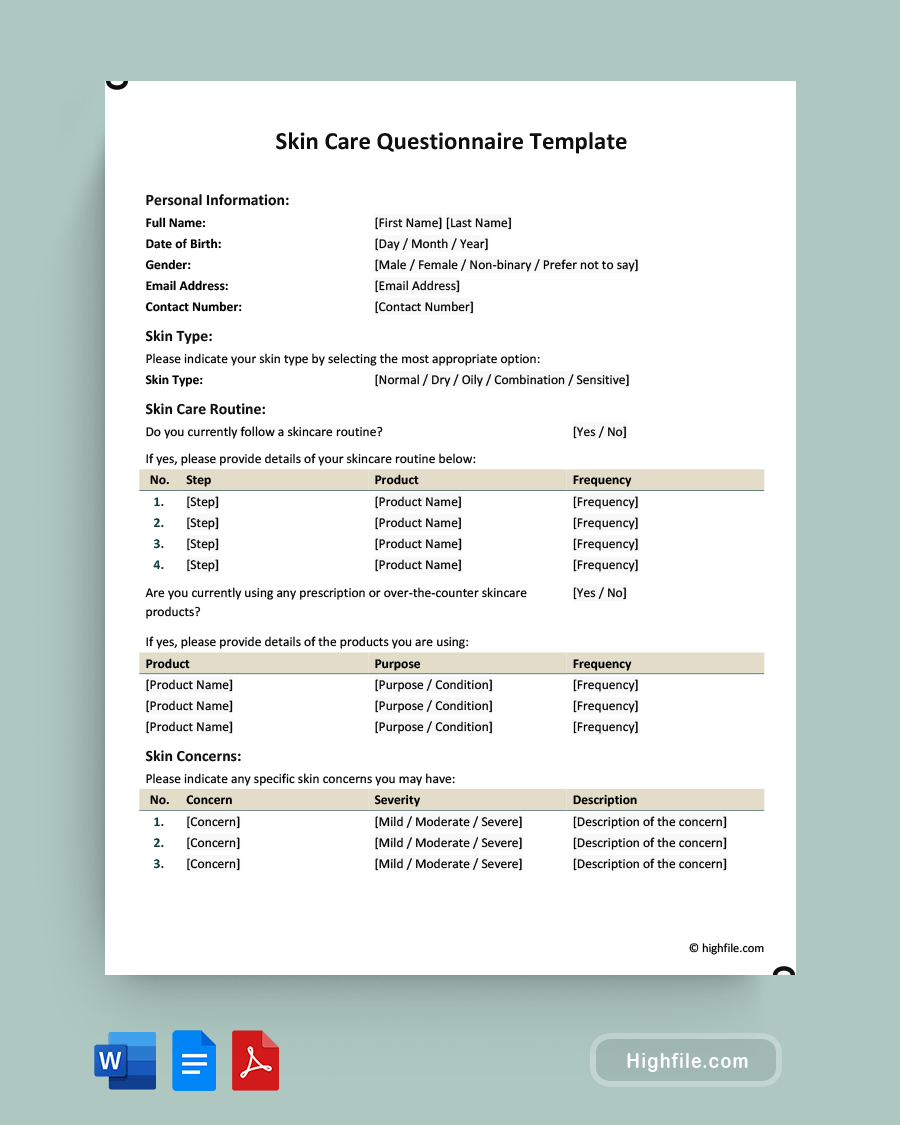Patients must sign an Access to Medical Records Consent Form to allow healthcare providers to access their medical records. These records contain important information about the patient’s medical history, including any previous or current medical conditions, surgeries, medications, allergies, and other crucial data. Access to medical records is essential for healthcare providers to provide accurate diagnoses and effective treatments. With the patient’s consent, healthcare providers can access their medical records from other providers, which can be crucial in emergencies or when treating complex medical conditions. The Access to Medical Records Consent Form also protects the patient’s privacy and confidentiality, as healthcare providers are bound by legal and ethical obligations to maintain patient confidentiality. Our high-quality Access to Medical Records Consent Form Template can help you save time and reduce human errors when creating a custom consent document.
What Is an Access to Medical Records Consent Form?
An Access to Medical Records Consent Form is a legal document that allows a healthcare provider or organization to access a patient’s medical records. The form provides consent from the patient or their authorized representative to release the medical records to the provider or organization requesting them. The Access to Medical Records Consent Form typically includes information such as the patient’s name and contact information, the healthcare provider or organization’s requesting records, any limitations to the access, and identifies the specific requested records.
Fun Fact: HIPAA has a special provision wherein patients can request ‘machine readable’ access to their medical records. This type of access can help patients share their information more readily with healthcare providers.
Why Is Access to Medical Records Consent Form Important?
An Access to Medical Records Consent Form is essential in providing patients with quality healthcare while respecting their rights to privacy and confidentiality. Here are the reasons why an Access to Medical Records Consent Form is important:
- Access: Allows healthcare providers to access a patient’s medical records, which is crucial for accurate diagnoses and effective treatments.
- Safety: Helps to identify any medical conditions, allergies, or medications that may impact the safety the treatment and treatment plan.
- Continuity: Ensures continuity of care, especially when a patient receives treatment from multiple healthcare providers. In order to facilitate the most effective diagnosis and treatment plan for individuals, it is imperative for healthcare providers to have access to comprehensive, cumulative medical data. This allows them to accurately identify the underlying causes of health issues and develop customized treatment plans tailored to the specific needs of each patient. Therefore, the availability of such data is a crucial component in achieving optimal health outcomes.
- Privacy: Protects patient confidentiality and privacy, as healthcare providers are bound by legal and ethical obligations to maintain patient confidentiality.
- Autonomy: Provides patients with control over their medical information by allowing them to choose which providers can access their records.
- History and Accuracy: This enables patients to monitor their medical history and ensure that their records are accurate and up-to-date.
- Relevancy: Helps to prevent medical errors by ensuring that healthcare providers have access to all relevant medical information.
- Legal Protection: This crucial document protects the medical staff by recording the consent to share otherwise protected information.
A Brief History of Medical Records Consent Forms
Medical records consent forms have existed for centuries, albeit in different forms. Ancient Greek and Roman medical practitioners recorded their patients’ medical histories on scrolls and tablets. In the Middle Ages, physicians would keep handwritten notes on their patients’ conditions and treatments. However, it was in the 20th century that medical records consent forms became a standard practice. The development of electronic medical records in the 1970s and 1980s increased the need for formalized consent forms that could be stored and retrieved electronically. Today, medical records consent forms are a legal requirement and essential to providing quality healthcare. They help to ensure that healthcare providers have access to all relevant medical information and that patients’ rights to privacy and confidentiality are respected.
Essential Elements of Access to Medical Records Consent Form
- Business Logo- A professional logo helps identify your business and create professional and brand continuity.
- Form Title- This identifies the document.
- Patient Information- Details such as full name, address, birth date, sex and NHS number identify the information to be shared.
- Recipient Details- This clarifies who is to receive the information.
- Limitations Statement- This optional statement allows the patient to set specific limits, such as duration.
- Consent, Signature, and Date- By signing and dating the form, the patient consents to allow their medical history to be shared.
- Gillick Competence Statement- A Gillick Competence statement determines whether a child under the age of 16 is competent to consent to their own medical treatment without the need for parental or guardian consent.
- Parent or Guardian Signature and Date- If necessary, the parent or guardian should identify themselves and provide their consent here.
- Parent or Guardian Address if Different from Patient- This merely identifies vital contact information for the parent or guardian when it varies from that of the patient.
Important Note: It is vital for healthcare providers to communicate clearly with patients about their right to access personal medical records. Doing so early often helps patients make informed decisions about their own medical care and promotes transparency and communication.
FAQs
The length of time that medical records should be kept on file depends on various factors, such as the type of record and the jurisdiction where the healthcare provider is located. Generally, healthcare providers are required to maintain medical records for a minimum of 6 to 10 years, but this can vary based on state and federal laws and regulations. The responsibility for maintaining medical records typically falls on the healthcare provider who created the document or their organization. These requirements include ensuring that the records are kept secure and confidential and that they are available to authorized parties when needed.
Patients have the right to revoke their consent for access to their medical records at any time. If a patient withdraws their permission, the healthcare provider or organization must stop accessing the patient’s medical records immediately. If the healthcare provider or organization has already accessed the patient’s medical records prior to the revocation of consent, they must comply with any applicable laws and regulations regarding the confidentiality and destruction of those records.
Generally, healthcare providers must keep medical records for a certain period before they can be destroyed or purged. The healthcare provider must ensure that the patient’s medical records are securely stored and not disclosed to unauthorized parties.
Key Points
An Access to Medical Records Consent Form typically includes the patient’s identifying information, such as name, date of birth, and contact details. It outlines the purpose of the consent, which is to allow healthcare providers to access the patient’s medical records. The patient, or their parent or guardian, must sign and date the form to give their informed consent. This vital document may also include details about the specific records that will be accessed, the duration of the permission, and the process for revoking consent. Additionally, the form should include information about patient confidentiality and how the healthcare provider will protect the patient’s privacy. These documents are critical to ensure healthcare providers have access to the necessary medical records while respecting the patient’s rights to privacy and confidentiality. Using our Access to Medical Records Consent Form Template lets you quickly gain permission to view patient medical records, often leading to better, safer patient outcomes.







